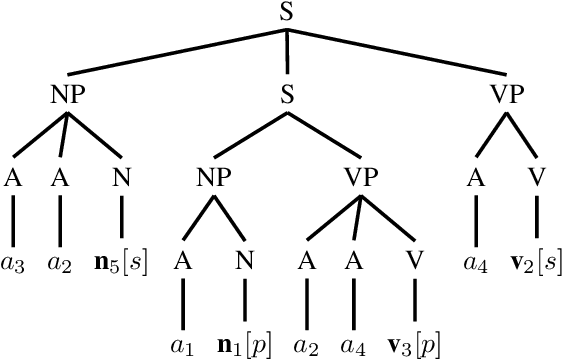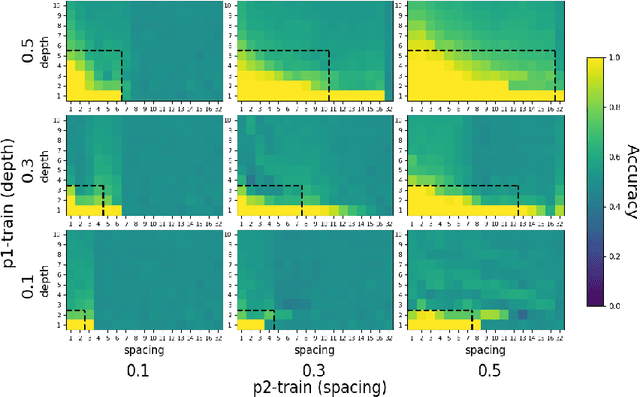Can RNNs learn Recursive Nested Subject-Verb Agreements?
Paper and Code
Jan 06, 2021



One of the fundamental principles of contemporary linguistics states that language processing requires the ability to extract recursively nested tree structures. However, it remains unclear whether and how this code could be implemented in neural circuits. Recent advances in Recurrent Neural Networks (RNNs), which achieve near-human performance in some language tasks, provide a compelling model to address such questions. Here, we present a new framework to study recursive processing in RNNs, using subject-verb agreement as a probe into the representations of the neural network. We trained six distinct types of RNNs on a simplified probabilistic context-free grammar designed to independently manipulate the length of a sentence and the depth of its syntactic tree. All RNNs generalized to subject-verb dependencies longer than those seen during training. However, none systematically generalized to deeper tree structures, even those with a structural bias towards learning nested tree (i.e., stack-RNNs). In addition, our analyses revealed primacy and recency effects in the generalization patterns of LSTM-based models, showing that these models tend to perform well on the outer- and innermost parts of a center-embedded tree structure, but poorly on its middle levels. Finally, probing the internal states of the model during the processing of sentences with nested tree structures, we found a complex encoding of grammatical agreement information (e.g. grammatical number), in which all the information for multiple words nouns was carried by a single unit. Taken together, these results indicate how neural networks may extract bounded nested tree structures, without learning a systematic recursive rule.
 Add to Chrome
Add to Chrome Add to Firefox
Add to Firefox Add to Edge
Add to Edge